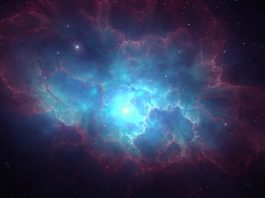Astronomers have identified two different cases of ‘mini-Neptune’ planets that are losing their puffy atmospheres and potentially transforming into ‘super Earths.’
What are ‘mini-Neptune’ planets and ‘super Earths’?
Exoplanets can exist in many different shapes and sizes that are not typically found in our solar system; these include small gaseous planets called ‘mini-Neptunes’, and rocky planets several times the Earth’s mass, known as ‘super Earths’.
Scientists have observed that radiation from the planet’s stars is stripping away their atmospheres and causing the hot gas to escape; similar to the process of steam fleeing from a pot of boiling water.
This discovery is not only helping researchers determine how exotic worlds like this form and evolve, but it is also contributing towards an explanation for the gap in the size distribution of planets found around other stars.
What have scientists found regarding the creation of super Earths?
Mini-Neptunes are essentially smaller, denser editions of the planet Neptune in our solar system and are believed to consist of large rocky cores surrounded by thick blankets of gas.
In the new studies, a team of astronomers utilised NASA’s Hubble Space Telescope to observe two mini-Neptunes orbiting HD 63433, which is a star located 73 light-years away; they also used the W. M. Keck Observatory in Hawaii to study one of two mini-Neptune planets in the star system called TOI 560, located 103 light-years away.
Scientists discovered that atmospheric gas is escaping from the innermost mini-Neptune in TOI 560, called TOI 560.01 (also known as HD 73583b), and from the outermost mini-Neptune in HD 63433, called HD 63433c. This suggests that they could be turning into super-Earths.
“Most astronomers suspected that young, mini-Neptunes must have evaporating atmospheres,” said Michael Zhang, lead author of both studies and a graduate student at Caltech. “But nobody had ever caught one in the process of doing so until now.”
The researchers were also surprised to discover that the gas around TOI 560.01 was escaping predominantly toward the star. “This was unexpected, as most models predict that the gas should flow away from the star,” said Heather Knutson of Caltech, professor of planetary science, Zhang’s advisor, and a co-author of the study. “We still have a lot to learn about how these outflows work in practice.”
What have scientists determined regarding the size difference between these exoplanets?
The first exoplanets orbiting sun-like stars were discovered in the mid-1990s, and since then thousands of other exoplanets have been found. Many of which orbit close to their stars, and the smaller, rocky ones generally fall into two groups: the mini-Neptunes and super-Earths.
Super-Earths are as large as 1.6 times the size of Earth, while the mini-Neptunes are between 2 and 4 times the size of Earth. These planets are not found in our solar system; few planets with sizes between these two ranges have been detected around other stars.
A potential explanation for this size difference is that the mini-Neptunes are transforming into the super-Earths. It has been theorised by scientists that mini-Neptunes are cocooned by primordial atmospheres made of hydrogen and helium.
The hydrogen and helium are products left over from the formation of the central star, which is born out of clouds of gas, and if a mini-Neptune is small enough and close enough to its star, stellar X-rays, and ultraviolet radiation, can strip away its primordial atmosphere over a period of hundreds of millions of years.
Therefore, this would then leave behind a rocky super-Earth with a substantially smaller diameter, which could, in theory, still retain a relatively thin atmosphere similar to that surrounding our planet Earth.
“A planet in the size-gap would have enough atmosphere to puff up its radius, making it intercept more stellar radiation and thereby enabling fast mass loss,” commented Zhang. “But the atmosphere is thin enough that it gets lost quickly. This is why a planet wouldn’t stay in the gap for long.”
Additionally, astronomers have theorised other explanations to explain this significant size gap; smaller rocky planets might have never gathered gas envelopes in the first place, and mini-Neptunes could be water worlds and not enveloped in hydrogen gas.
However, although there could easily be other explanations, scientists have stressed that the latest discovery of two mini-Neptunes with escaping atmospheres represents the first direct evidence to support the theory that mini-Neptunes are indeed turning into super-Earths.
How were the escaping atmospheres detected?
Astronomers detected the escaping atmospheres by observing the mini-Neptunes cross in front of, and in transit to, their host stars. The planets cannot be seen directly but when they pass in front of their stars— as seen from our point of view on Earth— telescopes can look for absorption of starlight by atoms in the planet’s atmospheres.
In the case of the mini-Neptune TOI 560.01, researchers discovered signatures of helium. For the star system HD 63433, the team found signatures of hydrogen in the outermost planet they studied, called HD 63433c, but not the inner planet, HD 63433b.
Zhang explained: “The inner planet may have already lost its atmosphere. The speed of the gases provides the evidence that the atmospheres are escaping. The observed helium around TOI 560.01 is moving as fast as 20km per second, while the hydrogen around HD 63433c is moving as fast as 50km per second.
“The gravity of these mini-Neptunes is not strong enough to hold on to such fast-moving gas. The extent of the outflows around the planets also indicates escaping atmospheres; the cocoon of gas around TOI 560.01 is at least 3.5 times as large as the radius of the planet, and the cocoon around HD 63433c is at least 12 times the radius of the planet.”
Additionally, the observations also revealed that the gas lost from TOI 560.01 was flowing towards the star; future observations of other mini-Neptunes should reveal if TOI 560.01 is an anomaly or whether an inward-moving atmospheric outflow is more common.
“As exoplanet scientists, we have learned to expect the unexpected,” Knutson concluded. “These exotic worlds are constantly surprising us with new physics that goes beyond what we observe in our solar system.”
The findings are being published in two separate papers in The Astronomical Journal.









